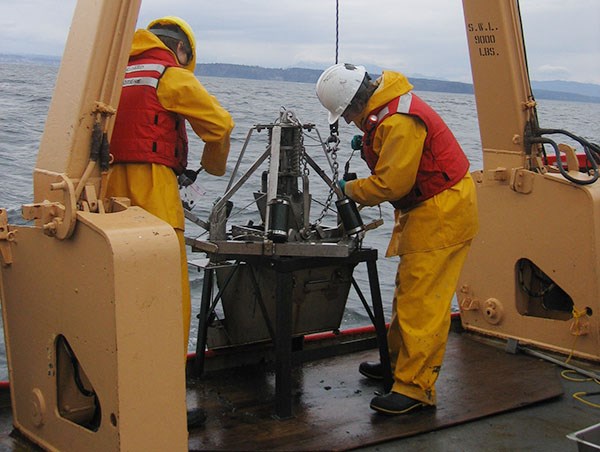Looking out across Howe Sound, ������Ƶappresidents may have recently seen the 40-metre long CCGS Vector on the water.
The 1967 Canadian Coast Guard vessel was carrying Environment Canada scientists who were collecting soil samples in the sound at two disposal-at-sea sites: off of Watts Point and at Thornbrough Channel near Lions Bay.
Celia Wong and Sean Standing are senior program scientists with Environment Canada who were onboard.
“We collect sediment samples from disposal sites in the Georgia Straight,” explained Wong, who spoke to The ������Ƶapp by phone from the Environment Canada office in Vancouver. There are 10 disposal-at-sea sites in B.C., according to Environment Canada.
The last time samples were taken from Howe Sound was in 2009, the scientists said.
“That is mainly because there is not much disposal activity there,” said Wong. Busier sites are visited more often.
The sites are where sediment from such activities as dredging are brought by barge.
“Disposal sites were established with the advent of the 1974 Ocean Dumping Act,” said Standing. The act was later changed to the current Canadian Environmental Protection Act.
Sediment from dredging in the Mamquam Blind Channel area, as well as previously from the ������ƵappTerminals, and debris from some of the mills and lumber log-handling facilities have been taken to the disposal-at-sea sites in Howe Sound.
A permit has to be obtained from Environment Canada before disposal, Standing said.
Samples are taken from the seabed at about 30 locations per site, Wong said, using a spring-loaded contraption on a long wire. A claw-like bucket closes and picks up about 20 litres of mud per drop, the scientists said.
The samples are brought to the surface, put in jars and sent away.
“There’s a set of parameters we are looking for,” Wong said. The lab tests the samples for various metals, oil and gases, and PCBs.
“The purpose of our monitoring really comes down to when somebody wants to dispose of stuff in the ocean, we test it out-front to make sure it is not contaminated with anything and it is going to be very similar to what is at the site,” Standing said. “Then we go back to the disposal site and we are here to confirm that yes, in fact, the stuff we thought wasn’t going to have any implications is, in fact, not having any implications and it is not contaminated.”
If the chemistry is not what was expected that triggers a reassessment of where the material is coming from or the management of the disposal site may have to be changed, Standing added.
“So far, it has all been pretty standard.”
The results won’t be back for months, according to the scientists.
The next time the scientists will be back for samples will be in three to five years, unless the site becomes more actively used.




